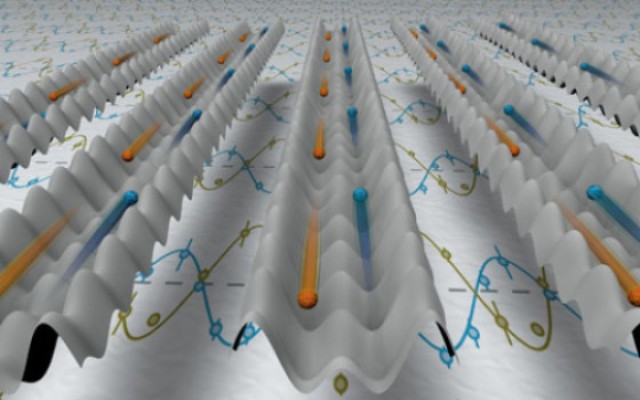31 August 2014

Quantum phase transitions are sudden changes in physical properties that occur as a result of the variation of a physical parameter. Contrary to the classical phase transitions (like the evaporation of water), quantum phase transitions can only be accessed at very low (ideally zero) temperatures. Their interest relies in the fact that they give rise to different phases or states in physical systems, which may have highly desirable properties such as superconductivity. For instance, when varying the strength of an applied magnetic field, the surface of a semiconductor experiences a transition between a Meissner uniform phase, and a vortex phase with circulating currents. Understanding this phenomenon has been the goal of one of the last experiments in the group of Immanuel Bloch, at the MPQ and LMU. In collaboration with Belén Paredes, at the Instituto de Física Teórica of Madrid, they have designed a new way to arrange ultra-cold atoms in an optical lattice (in other words, to organize them in space), forming a ladder configuration. Atoms can tunnel from one leg of the ladder to the opposite one, and in each leg they experience an artificial magnetic field in in opposite direction. Depending on the strength of the magnetic field, the two different phases or states are observed, the Meissner phase, and the vortex phase where the number of atoms in each trap is modulated as a function of position along the ladder. This quantum phase transition is here observed at its best, since ultra-cold atoms provide a clean and highly controllable setup where the relevant parameters can be varied and controlled at will. See more in the original paper in Nature for Physics, and in the news cover.
Contact:
Prof. Dr. Immanuel Bloch
Director at Max Planck Institute of Quantum Optics
Hans-Kopfermann-Straße 1
85748 Garching, Germany
Phone: +49 (0)89 / 32 905 -701 /Fax: -311
E-mail:
immanuel.bloch@mpq.mpg.de